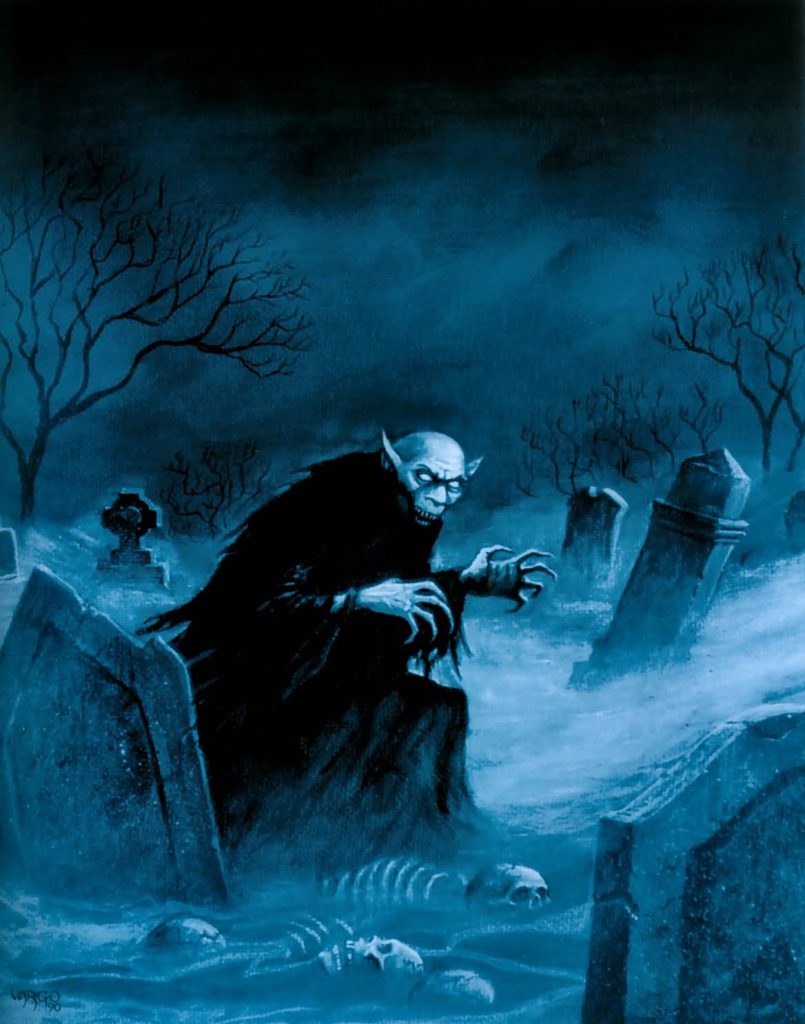Despite being called the Age of Enlightenment, the belief in vampires increased dramatically, resulting in a mass hysteria throughout most of Europe. It was around 1730 that the declining Ottoman empire lost Serbia and Wallachia to the Austrian Empire.
Western Europeans were first introduced to the vampire legend when the Austrian forces returned home with stories and report of the living dead.
During the 18th century there was a major vampire scare in Eastern Europe. Even government officials frequently got dragged into the hunting and staking of vampires.
It all started with an outbreak of alleged vampire attacks in East Prussia in 1721 and in the Habsburg Monarchy from 1725 to 1734. Two famous cases involved Peter Plogojowitz and Arnold Paole. As the story goes, Plogojowitz died at the age of 62, but came back a couple of times after his death asking his son for food. When the son refused, he was found dead the next day. Soon Plogojowitz returned and attacked some neighbours who died from loss of blood.

In the other famous case, Arnold Paole, an ex-soldier turned farmer who had allegedly been attacked by a vampire years before, died while haying. After his death, people began to die, and it was believed by everyone that Paole had returned to prey on the neighbours.
These two incidents were extremely well documented. Government officials examined the cases and the bodies, wrote them up in reports, and books were published afterwards of the Paole case and distributed around Europe. The controversy raged for a generation.
The problem was exacerbated by rural epidemics of so-claimed vampire attacks, with locals digging up bodies. Many scholars said vampires did not exist, and attributed reports to premature burial, or rabies.
Nonetheless, Dom Augustine Calmet, a well-respected French theologian and scholar, put together a carefully thought out treatise in 1746, which was at least ambiguous concerning the existence of vampires, if not admitting it explicitly.
He amassed reports of vampire incidents and numerous readers, including both a critical Voltaire and supportive demonologists, interpreted the treatise as claiming that vampires exist.
In his Philosophical Dictionary, Voltaire wrote:
“These vampires were corpses, who went out of their graves at night to suck the blood of the living, either at their throats or stomachs, after which they returned to their cemeteries. The persons so sucked waned, grew pale, and fell into consumption; while the sucking corpses grew fat, got rosy, and enjoyed an excellent appetite. It was in Poland, Hungary, Silesia, Moravia, Austria, and Lorraine, that the dead made this good cheer.”
According to some recent research, and judging from the second edition of the work in 1751, Calmet was actually somewhat sceptical towards the vampire concept as a whole. He did acknowledge that parts of the reports, such as the preservation of corpses, might be true. Whatever his personal convictions were, Calmet’s apparent support for vampire belief had considerable influence on other scholars at the time.
Eventually, Empress Maria Theresa of Austria sent her personal physician, Gerhard van Swieten, to investigate. He concluded that there was no sign that vampires exist, and the Empress passed laws prohibiting the opening of graves and desecration of bodies. This marked the end of the vampire epidemics. By then, though, many knew about vampires, and soon authors would adopt and adapt the concept of vampire, making it known to the general public.
